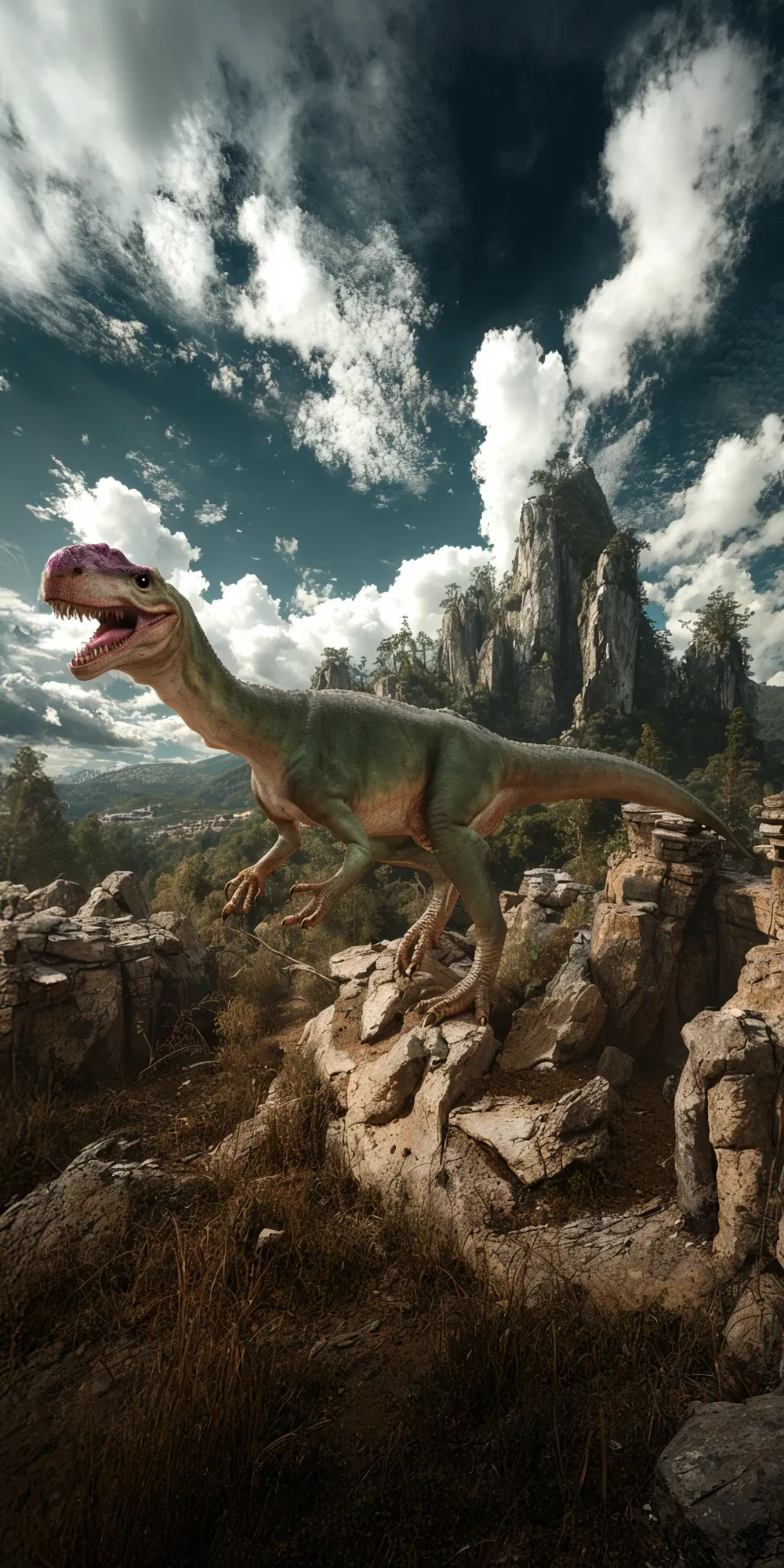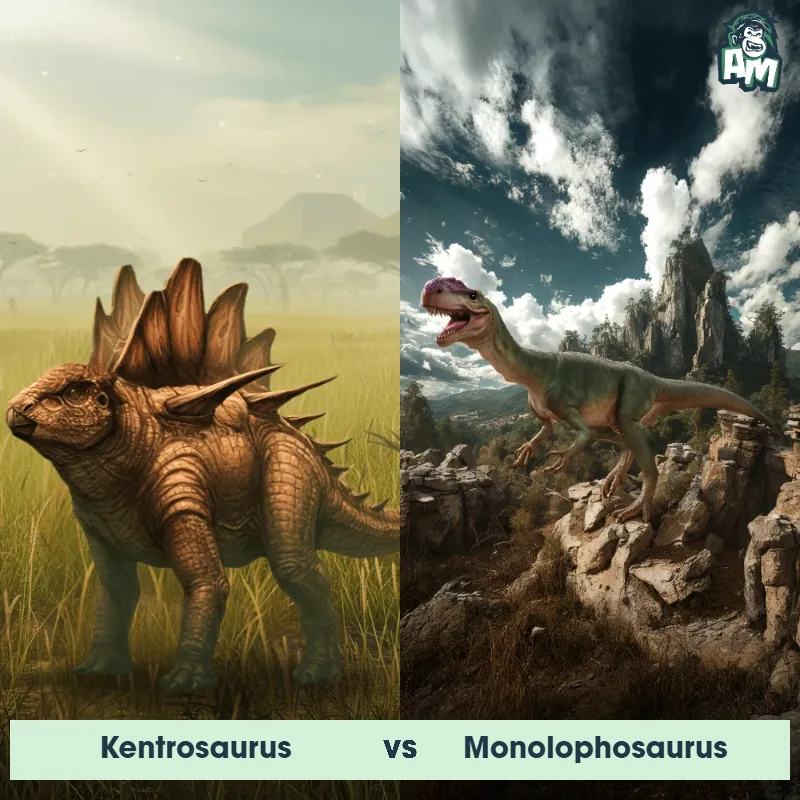The Monolophosaurus
The Monolophosaurus, also known as the "Single-Crested Lizard," was a medium-sized theropod dinosaur that lived during the Middle Jurassic period. It had a prominent crest on its head, which may have been used for display purposes. This carnivorous dinosaur had sharp teeth, strong jaws, and a long tail for balance while hunting. It walked on two legs and had powerful hind limbs.

| Monolophosaurus | |
|---|---|
| Size | 13 feet (4 meters) tall at the hip |
| Weight | 1,100 pounds (500 kilograms) |
| Speed | 25-30mph (40-48km/h) |
| Key Strength | Powerful hind limbs |
| Biggest Weakness | Long tail for balance |
| Scientific Name | Monolophosaurus |
| Family | Monolophosauridae |
| Habitat | Terrestrial |
| Geography | Asia (China) |
| Diet | Carnivore |
| Lifespan | 20 years - 25 years |

The Monolophosaurus
The Monolophosaurus, also known as the "Single-Crested Lizard," was a medium-sized theropod dinosaur that lived during the Middle Jurassic period. It had a prominent crest on its head, which may have been used for display purposes. This carnivorous dinosaur had sharp teeth, strong jaws, and a long tail for balance while hunting. It walked on two legs and had powerful hind limbs.
Fun Fact: The Monolophosaurus was named after the single crest on its head, which distinguished it from other similar theropods.
| Monolophosaurus | |
|---|---|
| Size | 13 feet (4 meters) tall at the hip |
| Weight | 1,100 pounds (500 kilograms) |
| Speed | 25-30mph (40-48km/h) |
| Key Strength | Powerful hind limbs |
| Biggest Weakness | Long tail for balance |
| Scientific Name | Monolophosaurus |
| Family | Monolophosauridae |
| Habitat | Terrestrial |
| Geography | Asia (China) |
| Diet | Carnivore |
| Lifespan | 20 years - 25 years |
Monolophosaurus Matchups
We use AI to simulate matchups between the Monolophosaurus and other animals. Our simulation considers size, strength, and natural predatory behaviors to determine the most likely outcome.

Can't find the Matchup you want?
Create Your Own MatchupMonolophosaurus: Diet, Predators, Aggression, and Defensive Behaviors
What did Monolophosaurus eat?
Monolophosaurus were carnivorous dinosaurs that primarily fed on small to medium-sized animals. Their diet may have included other dinosaurs, reptiles, and possibly even fish. They were known to be opportunistic hunters, typically ambushing their prey before attacking.
Did Monolophosaurus have any predators?
As apex predators during their time, Monolophosaurus would not have had any natural predators. However, they may have occasionally faced competition for food from other large carnivorous dinosaurs within their ecosystem.
Were Monolophosaurus aggressive?
Monolophosaurus are believed to have been aggressive hunters, using their sharp teeth and powerful jaws to capture and kill prey. They were also likely territorial animals, defending their hunting grounds from other predators or potential threats.
Did Monolophosaurus fight?
Monolophosaurus have been depicted in paleoart engaging in intraspecific combat, suggesting that they may have fought with each other for dominance or territory. These fights would have likely involved biting, clawing, and the use of their strong, muscular bodies.
How did Monolophosaurus defend themselves?
Monolophosaurus likely relied on their size, strength, and weaponry (such as sharp teeth and claws) for defense. If threatened, they may have used their agility and speed to evade dangerous situations or launch a swift counterattack against predators or rivals.
What was the biggest weakness of Monolophosaurus in a fight?
Despite their formidable physical attributes, Monolophosaurus may have been vulnerable to sustaining injuries during fights with other dinosaurs. Their thin skull and relatively narrow teeth may have been susceptible to damage if not properly protected during combat, making them potentially susceptible to serious injury or incapacitation.
Fun Fact: Monolophosaurus is believed to have been an apex predator in its ecosystem, preying on smaller dinosaurs and other animals.
Fun Fact: Fossil evidence suggests that Monolophosaurus may have displayed cannibalistic behavior, as some remains show signs of being consumed by other Monolophosaurus individuals.











